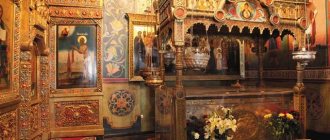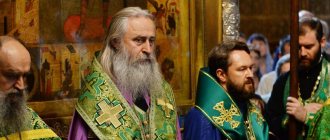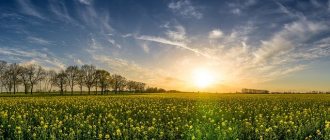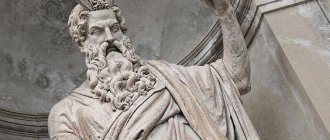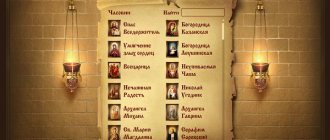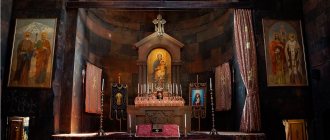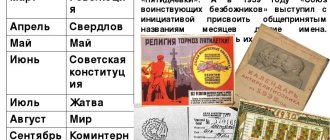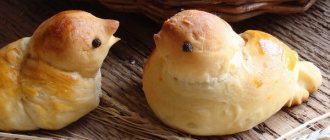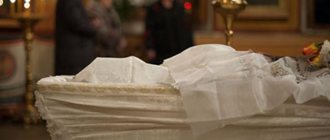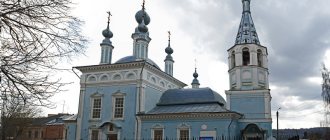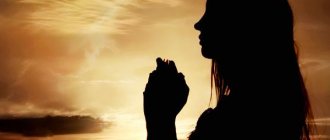Examples of canonization of rulers
Now groups of believers are emerging who put forward the initiative to canonize this or that historical character. Apparently, not only believers - for example, the communists of St. Petersburg turned to the hierarchy of the Russian Orthodox Church with a “petition” for the canonization of I.V. Stalin, in the world Dzhugashvili. Similar groups also arose who wanted to canonize Ivan Vasilyevich IV “The Terrible”, and from persons who did not lead the country - Grigory Rasputin, Igor Talkov, and also... Vasily Chapaev. It is not clear why they forgot his orderly and machine gunner, the pious Peter and Anna.
This is interesting! One marginal Orthodox group went the furthest, which decided to canonize “Ataulf of Munich,” that is, one half-educated Austrian-German corporal and self-taught artist, known throughout the world, unfortunately, not for his artistic works.
In Nizhny Novgorod they distinguished themselves with two proposals for canonization. The first concerned Alexander Sergeevich Pushkin, who, of course, is a genius and our everything, but whether he resembles a saint is difficult to say. But the second one caused a lot of noise, because for the first time in history a living person was canonized, and not just anyone, but Russian President Vladimir Putin. And he was not only canonized, but, as befits, his icon was painted.
The Russian Orthodox Church explained the portraits of Putin and Stalin on the mosaic of the main army temple
RBC sent an official request to the Ministry of Defense.
The chairman of the artistic council for the construction of the temple, Archpriest Leonid Kalinin, told RBC how mosaics with Putin, Shoigu and Stalin appeared within the walls of the building.
Read on RBC Pro
Expensive money: how an investor should respond to rising inflation
On Elon Musk's bookshelf: 6 favorite books of the founder of Tesla and SpaceX
How and for how much to buy a residence permit abroad: analysis of investment programs
There are fewer people in Russia. How does this threaten the logistics market?
“This is not a fake, this relatively small composition in the overall huge volume is really located inside the temple. And it reflects a historical event, and this was done without the consent of these persons, namely on the basis of historical data, by decision of the artistic council,” Kalinin said.
Video
Shoigu explained the choice of construction site for the Main Temple of the Russian Armed Forces Society
“Historically, starting from the 12th century, and in some places even earlier, for example in Sophia of Constantinople, there were images of persons not glorified as saints who played a role in history or in the creation of the temple. For example, in Sophia of Constantinople there was an image of Emperor Michael, Queen Eudokia, who were donors to the reconstruction of the temple during this historical period. Images are also present on the icons. For example, on the icon “The Last Judgment” they depict different characters, even kings and rulers, and in a very portrait way,” explained the clergyman.
Photo: MBH Media
According to Kalinin, the composition “Bloodless annexation of Crimea in 2014” occupies a very insignificant position in the temple. It depicts the people who directly made the decision to annex Crimea. “The composition “Victory Parade” was also depicted from a photograph. It shows the Supreme Commander-in-Chief of the Soviet Army in 1941–1945, Joseph Vissarionovich Stalin, in the background. He is shown there alone, although there were many other members of the Politburo and the Supreme Military Council in the historical photograph. The Arts Council considers these images absolutely appropriate, reflecting historical truth, from which pages cannot be torn out involuntarily,” Kalinin explained his point of view.
The main icon of the Church of the Armed Forces will be created using Putin’s personal funds Politics
“We took a different path in order to preserve both the historical truth and the balance that will allow us to depict historical figures in the temple, such as Suvorov, Kutuzov and other military leaders who took part in battles and battles for the defense of the Fatherland, since this temple is not ordinary, but a military one,” summed up the chairman of the artistic council.
As RBC was told by the press service of the Resurrection charity foundation, which is raising money for the construction of the temple, its walls will be decorated with artistic panels dedicated to the Battle of Kulikovo, the Patriotic War of 1812, the defense of the Brest Fortress, the battle for Smolensk, the battle for Moscow, the defense of Leningrad , defense of the Arctic, the battle of Rzhev, the battle of Kharkov, the battle of Kursk, the Battle of Stalingrad, the battle of Kuban, the battle of the Caucasus, the battle of the Dnieper, the liberation of Ukraine and Crimea, the liberation of Belarus and the Baltic states, the storming of Koenigsberg, the liberation of Eastern European countries, the battle for Berlin and other victories.
“Among the panels dedicated to recent history are artistic mosaics about the heroism of military personnel in performing international duty, peacekeeping missions and the fight against international terrorism in Southeast Asia, Africa, Central America, Central Asia, Transcaucasia and Syria. One of the mosaic panels is dedicated to the return of Crimea to the Russian Federation,” the foundation reported.
The Ministry of Defense announced the start of construction of the Main Temple of the Russian Armed Forces in September 2021. In terms of height, it should become the third Orthodox church in the world, behind the Cathedral of Christ the Savior (103 m) and St. Isaac's Cathedral (101.5 m). Its opening is scheduled for May 9, 2021 - the 75th anniversary of Victory in the Great Patriotic War.
Photo: MBH Media
The publication MBKH Media was the first to tell about the appearance of mosaics with politicians and historical figures in the decoration of the temple. The publication published photographs of mosaics with Shoigu and Putin, which also contain portraits of Federation Council Speaker Valentina Matvienko, State Duma Chairman Vyacheslav Volodin, Security Council Secretary Nikolai Patrushev, FSB Director Alexander Bortnikov and Chief of the General Staff Valery Gerasimov.
Press Secretary of the Russian President Dmitry Peskov said that the Kremlin is not familiar with the plans for the interior decoration of the Temple of the Armed Forces. “Unfortunately, I don’t know what images are on the walls of the temple, so I don’t know how true this information is,” he said and advised checking the information about the mosaics with the Ministry of Defense and the foundation involved in the construction of the temple.
About the Resurrecting Rus' community
In the Kstovsky district of the Nizhny Novgorod region, right on the M-7 highway, colloquially “Beijing”, connecting the center of Russia with Siberia and China, there is the village of Bolshaya Yelnya. The entry/exit sign for the settlement says “Bolelnya”, and passing people (especially sports fans) prefer to pronounce this toponym as “Bolelnya”. Judging by the organization that has settled in a three-story mansion with turrets and a fence, it is also a prayer house, but, judging by its teaching, it is first and foremost.
In general, the Nizhny Novgorod land is full of different sects. Here are “Allatra”, and “White Brotherhood”, and local inventions of Kulibin’s fellow countrymen - “Divya Loka” and “ARiMa”. The notorious spiritual vacuum during the years of Bolshevik rule had a particularly destructive effect on Nizhny Novgorod residents, primarily because this land, the homeland of the protagonist of the Old Believer movement, Archpriest Avvakum and his antagonist Patriarch Nikon, was never the patrimony of the state-owned church.
The Russian people, led by merchants, adhered to the Old Believers. The Mishar Tatars, of whom there are many in the Nizhny Novgorod region, remained Muslims. The Finno-Ugric people - Mari, Erzya and Moksha, although they were considered Orthodox, went to the groves to pray to their ancient gods. And the intelligentsia that emerged was either free-thinking atheist or Catholic, because most of it was Poles, Germans and Belarusians.
Putin's Easter secrets: is the president a believer?
State power began to turn its face to the church during the time of Gorbachev. In 1988, the USSR widely celebrated the 1000th anniversary of the baptism of Rus' - the celebrations were broadcast on Soviet television. The Secretary General himself, of course, did not attend the service, but in the same year he told the then Patriarch Pimen that freedom of conscience and religion would be enshrined in law.
Boris Yeltsin was also not a church person or even a religious person. However, it was he, as the clergy themselves believe, who for the first time gave the church freedom, which it rarely had from government authorities throughout its history. During Yeltsin's reign, many churches and monasteries were returned to believers, educational institutions began to open en masse, and the educational and social activities of the Russian Orthodox Church expanded widely. Yeltsin established a tradition of coming to the patriarch on his name day with congratulations and a bouquet of white flowers, which continues to this day.
Archpriest Vladimir Vigilyansky, who headed the press service of the Moscow Patriarchate in 2005–2012, argued that over the last 15 years of his life Yeltsin went from an atheist to a believer: “We know that after leaving the post of president, he went to church, visited holy places, although no one obliged him to do so.” According to Patriarch Alexy, Yeltsin had a real Christian trait: asking for forgiveness for his specific actions.
The biography of Vladimir Putin will also not allow one to suspect that he has been a believer, a churchgoer since the cradle. However, he was never an atheist communist either. For him, Orthodox Christianity is the other side of Marxism-Leninism. And both are in the service of the state. “Communist ideology is very similar to Christianity, in fact,” VVP argued in the documentary “Valaam,” which was shown on TV last year. - Freedom, brotherhood, equality, justice - all this is laid down in the Holy Scriptures. And the Code of the Builders of Communism? This is sublimation, a primitive excerpt from the Bible, nothing new was invented there.” In the same film, the president said things that were essentially correct, perhaps, but unthinkable for a believer: “Lenin was placed in the Mausoleum - how is this different from the relics of saints for the Orthodox? They tell me: no, there is no such tradition in the Christian world. Why not? Go to Mount Athos and look, there are holy relics there. And here too are the holy relics of Sergius and Herman.”
However, already in the first term of Putin’s presidency, clergy noted that he, unlike Yeltsin, who felt out of place in the temple, demonstrated deep familiarity with church services and rituals. In the book “In the First Person,” VVP said that, secretly from his father, who was the secretary of the party organization of the workshop, he was baptized in infancy by his mother and his neighbor in a communal apartment, Baba Anya. However, he did not go to church and did not wear a cross on his body until his trip to Israel in 1993, when, at the request of his mother, he consecrated it at the Holy Sepulcher.
Putin’s attitude towards the symbol of the Christian faith changed radically after August 12, 1996, when his dacha burned to the ground due to a short circuit in the wiring - only an aluminum cross survived, which workers found unharmed in a heap of ash. “It was amazing, a real revelation, and since then I have always carried it with me,” the president admitted. And indeed: in the footage of Putin with a bare torso while on vacation in Siberia, a simple cross on a string is visible. Later, VVP suggested that he could have been baptized by the father of Patriarch Kirill, who served in the Transfiguration Cathedral in Leningrad in the 50s.
For almost 20 years, while traveling around the country, Putin regularly visits temples and churches, to which he gives ancient and modern icons from his personal collection. As a rule, he celebrates Christmas in one of the regions. And in his free time, without the press and with a minimum of accompanying people, he visits monasteries, where he communicates with abbots and elders. After the second inauguration, the patriarch held a private service for the GDP. In 2021, this fact was no longer hidden: after Putin took the oath of office, Kirill performed a thanksgiving prayer service in the Annunciation Cathedral of the Kremlin.
Press secretary of the head of state Dmitry Peskov says that the president regularly plunges into the ice hole at Epiphany. However, the corresponding video was published only once - during the last election campaign. Then the believers themselves noticed that Putin plunged “not according to the regulations”: firstly, before diving, he pinched his nose, and secondly, entering the ice hole, which symbolizes the Jordan River, he crossed himself from left to right, and not from right to left, as is the case accepted among the Orthodox. Some decided that the president was worried or that the icy water affected him. Others concluded that for VVP, making the sign of the cross is not an everyday thing - otherwise, a reflexive automatism of hand movements would have long ago developed, which no external factors can influence.
Putin’s opponents also argue that he is not a deeply religious person, but acts according to state necessity, understanding the influence the church has on people today. Indeed: the president has repeatedly emphasized the inseparability of Orthodoxy and Russia. “Throughout history, Orthodoxy has played a very significant role in the life of our state and our people. Our moral values are primarily based on Christian Orthodox values, and in this sense it is the most important component of the soul of Russia,” he noted in the film “Patriarch.”
According to Putin’s former friend, businessman Sergei Pugachev, the president “perceives the church as a kind of community of people connected by one goal, which can be used one way or another.” Pugachev claims that he himself introduced the GDP to Tikhon Shevkunov, who is now the abbot of the Pskov-Pechersk Monastery. However, he is not his confessor. And in general, according to the disgraced banker, Vladimir Putin cannot have any confessor by definition: he simply does not need it.
It is noteworthy that last year, to the question “When did you believe in God?” asked during a direct line, Putin answered rather evasively, emphasizing that this is a very intimate area, and he would not be too keen to talk about it publicly. According to the president, every person is born with faith in God in their soul, but some realize this only when they find themselves in an extreme situation - for example, like soldiers during the Great Patriotic War. Whether such a revolution has occurred in the life of the GDP itself remains a mystery. To another question: “Who do you believe in?” — Putin once said that he believes “in man, in his good intentions.”
Let us note that Dmitry Medvedev, who with his wife Svetlana also annually attends the Easter service in the Cathedral of Christ the Savior, does not hide his religious views. According to the prime minister, he was baptized at the age of 23, when he felt the need, and from then on “a different life began for him.” “I am a believer,” LADY admitted several years ago in Vladimir Pozner’s program, and in response to the TV presenter’s traditional question, he answered that when he appears before God, he will ask Him for “forgiveness for everything that I have done.”
Faith of Mother Photinia
The founder of the “sect of Putin’s witnesses” was Svetlana Robertovna Frolova, a former employee of the trade and purchasing base of the Gorky Railway. She succeeded along this path, but for the time being - the crooked path of fate led her to places not so distant.
After serving a year and a half for fraud, she returned to worldly life. At the same time, she turned out to be a healer, the owner of a house in Nizhny Novgorod and a three-story cottage in that same Bolelny, bought either with money from healing, or with funds “earned” from her previous work.
Fact! The organization “Resurrecting Rus'” is syncretic, and is more likely to belong to the “New Age” religions than to Christian sects.
In its doctrine there is a place for elements of Orthodoxy, Islam, Catholicism and many other religions. A special place is given to reincarnation. More precisely, reincarnation, the test word is obviously “cut off”. This is exactly how the founder of the association writes the term denoting the reincarnation of souls. For example, Frolova herself appeared earlier: Eve, Joan of Arc, Jesus Christ, Zoya Kosmodemyanskaya, Mother Superior Maria, an Indian guru and two queens at once - Sheba and Helena, who found the tree of the Holy Cross.
The list is not presented in chronological order, because if this is all true, then academicians Nosovsky and Fomenko, who are in fact one person, are not so wrong. Because Novgorod is Yaroslavl, because it is Upper Novgorod (read academician Fomonosenko). And, for example, Queen Helen of Sheba (because of her the Trojan War also happened) is also one person.
Holy army. About Putin, whom we did not know
Coercion to power is a well-known plot in the relations of Russian courtiers with the sovereign, the communist leader, and the president. It even reached the point of familiarity, when the military governor of St. Petersburg rudely encouraged the indecisive, depressed Tsarevich: they say, stop being childish, go and reign. It happened that the elderly secretary general asked to retire, but they did not let him go. And it also happened that a powerful regional leader directly declared: we will not ask the guarantor, we ourselves, together with the people, will make a choice for him and force him to serve a new term.
Compulsion for canonization is a completely unprecedented phenomenon.
I mean the story unfolding before our eyes with the construction of the Main Temple of the Armed Forces and the mosaics decorating the building. There, on these panels, in addition to traditional church faces, political figures and military leaders of past and present times are also depicted. Among them, for example, poster comrade. Stalin, which has already given rise to a wide public debate. During which, for example, the issue of the admissibility of glorifying the enemy of the human race within church walls is discussed. But this rather complex issue, as it turns out, has not yet been resolved.
Of particular public interest is the part of the composition where modern Russians are depicted. They celebrate the return of Crimea to their native harbor, and in the crowd of triumphants, apart from the jubilant people and the nameless “polite people” with machine guns in the foreground, as if guarding the procession, painfully familiar faces emerge. Putin, Matvienko, Shoigu, Lavrov, Patrushev, Bortnikov, Gerasimov, Dyumin... In other words, these leaders, commanders and knights of cloak and dagger, led by the commander in chief, visibly radiate holiness, which also provoked a scandal. First, of a moral nature, related to the appropriateness of lifetime worship of politicians, warriors and security officers (and some irreconcilable oppositionists agree that it is inappropriate to glorify invaders, Cold War instigators and other Herods in a Christian church - the Mother of God does not order). Now, after Vladimir Vladimirovich personally became involved in the controversy, it has acquired an extraordinary scale.
President Putin spoke modestly and simply on the given topic. “Someday grateful descendants will appreciate our merits, but now it’s too early to do this,” - in this spirit and with a smile, as Peskov’s press secretary reports, he commented on the latest news from the construction site. And then, according to the laws of the authoritarian state, as Putin’s Russia is commonly called, his wish should have become a directive for his subordinates. And all of them, who immediately disowned premature retribution, should have protested and demanded that the artist carry out the will of the top management. And the painter Nesterenko himself, and other persons involved in the creation of the mosaic, were obliged to take a stand and correct the picture.
Sergei Shoigu (left) during an inspection of the main temple of the Russian Armed Forces under construction Photo: Vadim Savitsky/TASS
The opposite happened. Matvienko, Shoigu and other heroes remained silent. The artist said that he knew nothing. His colleagues who participated in decorating the temple generally showed disobedience and said that they would not remove anyone, because the liberators of Crimea were “saints” to them. Member of the Patriarchal Council for Culture Kalinin also agrees with those who disagree, pointing out the “reinforced concreteness of the argumentation” of the rebellious artists. That is, he is ready to obey Vladimir Vladimirovich, but only if an order comes from the Kremlin or from the patriarch.
This is an amazing story in which only one thing can be predicted with complete confidence: Kirill will not object to the deification of Putin. And with him, the presidential associates will rush en masse to the church paradise. As for the head of state directly, the problem he faced does not seem very difficult.
On the one hand, it is known that putting pressure on a guarantor is pointless - he does not give in to pressure and always acts contrary. He also does not accept reinforced concrete arguments in such situations. There are many examples.
On the other hand, this pattern applies when it comes to enemies. He forgives with a smile the insolence uttered by his faithful associates, pining for devotion, - let us remember Kadyrov, who forced his boss, among many, to reset the deadlines and succeeded. By the way, the special operation to extend the presidential mandate, which had not yet been completed, also contained elements of pressure. When our famous female cosmonaut proclaimed from the Duma rostrum that Putin was absolutely obliged to submit to the people’s will and serve at least two more terms in the Kremlin. And he, who knows, obeyed, yielding to the lady. He succumbed to the pressure.
That’s why the thought creeps in that he will give in now. He will allow himself to be persuaded, despite the fact that he seemed to express himself clearly, notifying Peskov that he intends to find glory in his descendants. Or simply will no longer interfere with the work of artists: you, they say, draw, you will be honored. He won’t want to encroach on creative freedom. In addition, a guess arises that all this has long been rehearsed at the top, like Tereshkov’s sensational speech with its constitutional amendment and sudden vote. So it is now: first, the honorary saints in the picture, perhaps without halos, then the scandal and limp objections of the modest president, the silence of the elites, an explosion of patriotic indignation in the workshop of the mosaic masters - and the intrigue is over. The main temple in the Patriot Park near Moscow - the same one, by the way, where the toy Reichstag was stormed, and successfully - is almost completed and on May 9, the “polite people” who took refuge in helmets from the coronavirus, together with Putin, will join immortality.
However, this is just a guess about the coordination of the church action with the Kremlin and personally with the president. There is chaos in the country, and just imagine what is happening today as part of clever PR, and what is happening at the behest of a pike. What there is no doubt about is the uniqueness of the phenomenon under consideration. It's no joke, people are canonized during their lifetime, the most important one weakly resists, but, apparently, cannot resist the pressure. Looks like he's going to lose his peace.
Meaning of the image
Vladimir Vladimirovich Putin, according to Frolova, who had already become Mother Photinia, also had several incarnations. For example, he was two Pauls at once (emperor and apostle), King Solomon, and Prince Vladimir. The very name “Putin” means “another path”, and he, as the “reincarnation” of Vladimir Svyatoslavich, must again baptize Rus'.
At the prayer services themselves, members of the organization, in addition to the required prayers according to the statutes of the Russian Orthodox Church, sing the anthem of the Russian Empire “God Save the Tsar” and the Soviet children's song “Sunny Circle”, probably in the original version. Although a kindergarten one, with a mention of the Venerable Martyr Ataulf of Munich, who went on reconnaissance and broke his leg, would also be in color.
They stand on rugs during services, and Frolova herself conducts the service. By the way, in 2005, she wrote a letter to the then Patriarch of Moscow and All Rus' Alexy II asking him to ordain her as a priest. He, of course, refused.
Description of the image
The icon of Putin hung in the community near the altar, strings hung from it and parishioners tied their jewelry to them - “as a gift” to the icon. She, according to the adherents of the sect, streamed myrrh, like most of the icons in their “community.” It turns out that it is located at the place where the gates to hell are located, and Svetlana Frolova guards them.
“Mother Photinia” does not forget about the railway past. “Resurrectionists of Rus'” sold the organization’s newspaper on commuter trains for a long time. But their main source of finance is most likely entrepreneurs, to whom Photinia sent letters asking for financial assistance, signed by the “Orthodox community.” And Putin’s face is something between a talisman and a “roof.” The Nizhny Novgorod diocese of the Russian Orthodox Church MP constantly tells its parishioners and others that the Frolova community is a sect that has nothing to do with the Orthodox Church.
This is interesting! The rector of the local church of St. Nicholas the Wonderworker, at his own expense, installed a sign on the side of the road showing the road leading to the real Orthodox church, so as not to be confused.
Gogol sought advice in the Optina Monastery when he wrote Dead Souls. Even excommunicated Tolstoy often went there, but stayed away from the monastery, not having the right to enter its territory. Thanks to religion, Vladimir Putin not only wins a significant share of popular approval, he builds his post- and anti-Western policies on it.
Recent events appear to have provided ample evidence for Americans to fear Russian influence in the United States, even in the White House. Beyond the Atlantic, however, anxiety is spreading in the opposite direction. “In many countries in Central and Eastern Europe, people are concerned about the spread of American influence in their territories and want Russia to stop it, according to a new Pew study,” the Atlantic magazine comments.
Pew researchers surveyed more than 25 thousand people living in Russia and 18 other countries from Ukraine to Poland and from Bulgaria to Greece. Here the number of Orthodox Christians makes up almost 57% of the region's population. In Russia there are 71% of them. Pew found that the share of citizens identifying as “Orthodox” has risen sharply in the region since the collapse of the Soviet Union. In contrast, historically Catholic countries have seen equally steep declines in populations identifying as Catholic.
© RIA Novosti, Grigory Sysoev | Go to photobank Believers venerate the relics of St. Nicholas the Wonderworker in the Cathedral of Christ the Savior
“Orthodox churches are constantly expanding their influence east of the Elbe,” writes Filip Mazurczak in First Things magazine. “Russia is rediscovering Orthodoxy. Patriarch Kirill’s influence is growing, monasteries and parish churches are constantly being reopened, more and more Russians believe in God, more and more young people are choosing a religious vocation.”
Grace Davie, a British sociologist, proposed the definition of “believing but not belonging” to characterize Western Europeans. In Eastern Europe and Russia, the Pew Center emphasizes, one can say that people “belong, but do not believe.” Russia in these countries is seen as a kind of “buffer”, a religious and ideological barrier against Western culture. Those surveyed agreed with the statement that “a strong Russia is needed to balance the influence of the West.” And this is true not only for countries in the Russian sphere of influence. Even in Greece, 70% of the population agrees with this statement, despite the fact that the country is a member of the European Union.
The percentage of Russians who call themselves Orthodox Christians has risen significantly since the collapse of the Soviet Union, from 37% in 1991 to 71% in 2021. “They look to Russia in a variety of ways: geopolitical, cultural, religious and economic,” said Neha Sahgal ( Neha Sahgal, one of the study leaders. Economically, the clash is striking given that many of these countries were dominated by communist regimes in the past. Pheiffer Noble, an expert on Russian politics, told the Atlantic: "There is a perception among Russians that they are preserving culture."
“Russian culture has its own canon, and it’s impressive,” Noble said. “They have Tolstoy, Dostoevsky, iconography, the idea of suffering as a cultural value, and they feel they are winning in this.”
Over the past few years, Russian President Vladimir Putin's policies have been marked by a powerful ideological charge: Russia as a bulwark of Christianity against the post-Christian and relativistic West. To this end, Putin relied on a cultural policy based on icons, relics of saints, churches and monasteries, which experts called the “spiritual security service,” as well as the ideological fusion of state apparatuses and the Orthodox Church, nicknamed by critics the “ministry of religious propaganda,” even the use of “religious diplomacy” (and restrictions on religious freedom in Russia, extending to non-Orthodox confessions).
Recently, Putin symbolically kissed the reliquary, which contains a 13-centimeter fragment of the left rib of St. Nicholas. The relic was delivered from Bari to the Moscow Cathedral of Christ the Savior, where it will remain until July 12, after which it will be taken to St. Petersburg until July 28. The relics of the saint, revered by both Catholics and Orthodox Christians, will then return to Bari, where they have been kept for 930 years. Over three days, 100 thousand believers visited the Cathedral of Christ the Savior, wanting to pray at the relics of St. Nicholas.
During his visit to French President Emmanuel Macron, Putin visited an Orthodox Church outpost in France. This is a “Russian Orthodox spiritual center”, which includes a primary school, exhibition space, recreation area and, most importantly, the large Holy Trinity Cathedral. The temple rises 37 meters. Putin applied pressure to get permission to build it and spent 170 million euros on it. A few days ago he visited there for the first time, lit candles, kissed Russian icons, and congratulated the heads of the Russian Orthodox Church in Paris. Rachida Dati, former French Minister of Justice, was present.
© RIA Novosti, Irina Kalashnikova | Go to photobank Opening of the Russian spiritual and cultural center in Paris
A year ago, Putin also financed the restoration of the Cathedral of St. Nicholas the Wonderworker in Nice: this is the largest and most important cathedral of the Russian Orthodox Church located outside the “homeland”. Its opening and ceremonial service were attended by the Russian Ambassador to Paris Alexander Orlov, Kremlin confidants, as well as the mayor of Nice Christian Estrosi. The restoration of the cathedral cost more than 15 million euros.
Six months ago, Russian Patriarch Kirill, a great ally of Putin, flew to London to consecrate the Assumption Cathedral in the English capital. The historic ceremony was one of the highlights of the visit of Patriarch Kirill, who visited London for the first time in his role as head of the Russian Orthodox Church.
When Putin became president in 2012, he took part in the transfer to the Novodevichy Convent of the oldest copy of the Iveron Icon of the Mother of God, brought to Rus' from Athos in 1648. It is in Mount Athos that Putin is investing heavily. He personally visited there twice in 2006 and 2021. This is a world rich in mystical as well as material treasures, given that the libraries of the monasteries contain priceless documents, such as the manuscript of Ptolemy's Geography. Putin financed the Russian monastery of Panteleimon, where 70 monks live. The Russian president does not miss spiritual pilgrimages to the Tikhvin Monastery, where he venerates one of Russia's most revered icons of the Mother of God, as well as to Solovki, an island in the White Sea that was home to one of the largest monasteries, famous for being the site of the Gulag, where believers were housed prisoners, in particular Pavel Florensky. It was on Solovki, in connection with the anniversary of the collapse of the Soviet Union, that Putin formed his credo, in a way, betting on Russia’s return to the “roots of Christianity” and the “moral foundations of life.”
Pilgrimages are also made to Yekaterinburg, where the Romanovs, including Tsar Nicholas II, were executed. In 2005, Putin again declared a national holiday the day of Russia's liberation from the Poles, which was celebrated under the Romanovs. Putin ordered large celebrations to mark the 400th anniversary of the House of Romanov, and the Orthodox Church canonized Nicholas II.
Even in his relations with the Vatican, Putin often relies on icons. John Paul II in 2004 gave Russia the icon of the Kazan Mother of God, the most revered image in eastern Europe. The Russian president, in turn, donated to Pope Francis the icon of the Vladimir Mother of God, one of the most revered in the Orthodox Church. When the Pope was leaving the table with gifts, Putin stopped him, asking: “Do you like the icon?” Bergoglio answered in the affirmative. Then Putin made the sign of the cross and kissed the image of the Mother of God.
Aftenposten 05/25/2017 Helsingin Sanomat 04/18/2017 Frankfurter Allgemeine Zeitung 05/17/2017 Yle 06/03/2017 The Telegraph UK 05/29/2017 Putin often travels to Sergiev Posad. The local monastery is a place of pilgrimage for believers from all over Russia, who come here to honor St. Sergius of Radonezh, one of the most revered saints in the Orthodox Church. Even in Syria, which has fallen victim to a terrible civil war, Putin’s circle is betting heavily on the restoration of monasteries and Christian places of worship. “This is the first time we have been able to come to this city as pilgrims,” said Russian parliamentarian Dmitry Sablin in the Christian city of Maalula, long under siege by Islamists.
“What we saw here is difficult to describe,” State Duma deputies who visited this city told Interfax. — Sacred places are destroyed, temples are burned. And all this happens in the 21st century. The mayor of Maaloula and the abbots of the monastery told us that they would like Putin to visit the city.”
The Russian Orthodox Church often serves as a mediator for Putin. US Vice President Mike Pence recently met with Metropolitan Hilarion, the “Minister of Foreign Affairs” of the Russian Church. Putin has also been active in the film industry, financing films in Russia such as “The Fall of an Empire: A Byzantine Lesson,” written by Tikhon Shevkunov, Putin’s confessor. Shevkunov tells how the Russians inherited “the main treasure of Byzantium” - not gold, but the Orthodox faith.
Putin always chooses the right moment to show up at a service. One day he stunned the parishioners of a small church in Turginovo, 150 kilometers from Moscow, with his appearance. The president's parents were once baptized there. Wherever he goes, for example to his Hungarian rival Viktor Orban, Putin, in addition to contracts, always seeks to conclude agreements on the reconstruction of old Orthodox churches destroyed under communism. Wherever there are significant Orthodox communities, many churches arise there. Romania, for example, has become the center of such religious fervor, with new religious buildings being completed every month. The Bucharest Cathedral, when construction work is completed, will be the tallest religious building in all of southeastern Europe.
The first fragment of a huge mosaic designed to decorate the large Orthodox Church of St. Sava in Belgrade, one of the most grandiose and majestic in the Balkans, has just been delivered to the Serbian capital. The large mosaic has received Putin's approval, is valued at 4 million euros, and much of it was financed by energy colossus Gazprom.
In Russia, Putin oversaw the reconstruction of some 23,000 churches that had previously been destroyed or abandoned. This week, Putin participated together with the Moscow Patriarch in the consecration ceremony of a new church in the Sretensky Monastery in honor of the Resurrection of Christ and the New Martyrs and Confessors of the Russian Church. The temple is dedicated to the victims of communism.
© RIA Novosti, Alexey Druzhinin | Go to photobank Russian President Vladimir Putin and Patriarch of Moscow and All Rus' Kirill
Moscow sets itself the goal of “returning the population of Russia to Christianity,” but this is not its only task. This is explained in England by Orthodox Archbishop Andrew Phillips, close to Moscow, who spoke about the dreams of the Russian Federation and the Moscow Patriarchate: “Return the West to the fold of Christianity.” According to Phillips, there are now more practicing Orthodox Christians than Catholics and Protestants, who are disappearing in the process of secularization. “Western Europe became the territory of Christian mission,” Phillips wrote. — We must build a thousand Orthodox churches in Western Europe. Yes, exactly a thousand. Every city with 100 thousand inhabitants should have an Orthodox Church.”
It goes without saying that “the European Union has become a huge atheistic, anti-democratic bloc, fueled by humanistic liberalism.” As David Goldman wrote in First Things: “With the triumph of secularism in Western Europe, it is conceivable that Russia will become the most Christian state on our continent.”
Naturally, Putin's oligarchs are happy to help the church. Svetlana Medvedeva, the wife of the Russian prime minister, and Irina Abramovich, the ex-wife of an oligarch, are active in the new Christian proselytism. State Duma member and oligarch close to Putin Ivan Savvidis finances many churches in Greece. Another church philanthropist is Oleg Deripaska, who is also an aluminum tycoon. Deripaska revived the Orthodox community in Manchester, England. The church is also supported by Vladimir Yakunin, who heads the Russian Railways and organized the transportation of fragments of the cross of St. Andrew to Ukraine.
Russia is the only state that finances churches in Europe today. Islamic countries do roughly the same thing with regard to mosques. Even the large Christmas tree in Notre Dame Cathedral was offered to France by Russia. Patrick Jacquin, rector of the cathedral, said that he does not have the 80 thousand euros necessary to pay for it. And this issue was decided by the Caesaropapist Putin.
InoSMI materials contain assessments exclusively of foreign media and do not reflect the position of the InoSMI editorial staff.
The history of the appearance of the face
Now Svetlana Frolova herself denies the presence of an icon depicting Putin. And she no longer calls herself Photinia, but Maria. The parish, in every sense of the word, has either passed or changed. Although back in 2012, Frolova did not deny the presence of such an icon in her community.
In 2012, the woman published a statement on her official Internet page. It was made then on behalf of “Mother Photinia.” It stated that:
“...since January 19, the icon of Prime Minister and presidential candidate Vladimir Putin, as well as his consecrated portrait, stored “in the temple,” began to flow myrrh.”
The news was greeted with unprecedented excitement, especially by journalists. Pictures of the icon began to appear online. In addition to the Frolova sect, the canonization of Vladimir Putin is also supported by the National Committee 60+ movement, created to celebrate the 60th anniversary of the president. They also consider Putin to continue the work of Vladimir Svyatoslavovich and also turned to the Patriarch, now Kirill, with a proposal to canonize Putin.
The image of Putin in the distorting mirror of superstitions
Schegumen Sergius (Romanov) scares believers with the appearance of the Antichrist “in a silicone mask” of the national leader. Still from a video from the “Royal Cross” channel on YouTube
Exalted admirers of Vladimir Putin discredit the country's leadership. Especially now, when they have begun to make profit from eccentricities. There have been reports that souvenir stalls at the St. Petersburg Pulkovo Airport are selling a kind of “icon” depicting the President of Russia.
Journalists asked the opinion of presidential press secretary Dmitry Peskov. “We don’t welcome this. And the president himself does not welcome this. This can hardly be called an icon. “Probably, such images would be inappropriate,” Peskov answered reporters. Such questions were asked to the head of the presidential press service before, and journalists always received approximately the same answers. All this turned into a kind of ritual.
After all, reports about marginal groups where “sacred” images of the Russian president are venerated have come from the outback before. In 2012, when Vladimir Putin was once again fighting for the presidency, in the village of Bolshaya Yelnya, Nizhny Novgorod region, not an ordinary, but a “miraculous” icon was discovered with the face of the national leader, who then served as prime minister.
"Attention! Since January 19, 2012, the icon of Vladimir Putin, as well as his consecrated portrait, has been renewed and myrrh-streamed in the church. The Lord gives us such signs of His gracious presence,” said the website of the founder of the group of “Putin worshippers,” who called herself “Mother Fotinya,” and before that was called Svetlana Frolova. “Putin is a different path for Russia. In one of his past lives, he was Prince Vladimir and baptized Rus', now Vladimir Vladimirovich will have to re-baptize our pagan country!” - said an admirer of Putin. The “temple” where the miracle happened to the icon is owned by Frolova, as reported by Nizhny Novgorod media. This group has been known since 2005.
“I believe that such actions by sectarians led by a person previously convicted of fraud discredit the honor and dignity of the President of Russia. I think that the presidential administration should stop them with its instruments of non-forceful influence,” commented then the press secretary of the Nizhny Novgorod and Arzamas diocese of the Russian Orthodox Church, Archpriest Igor Pchelintsev.
Having predicted a glorious future for Putin, Mother Fotinha disappeared from the news. Her website has disappeared. Traces of account activity on VKontakte were last noted last fall. Fotinha made an appeal to raise money for Donbass, but readers responded to these entries with rare and rather lukewarm curses against the self-proclaimed “mother.”
The veneration of the Russian president is not limited to pseudo-iconography. In 2011, the media discovered a certain Vladimir Kosolapov, who proposed creating the “Church of Putin - One God.” “Putin must become the spiritual father of the new religion of one God! It is necessary to build temples for all people, where governors and prosecutors can clean their feathers,” this public figure called. He even seemed to be collecting money for his temple. Nothing is known about the further fate of the new “church” and the funds collected.
They also say prayers to Putin. In 2015, activists of the organization “National Committee +60”, dedicated to the president’s birthday, demanded that Patriarch Kirill canonize the head of state and supplement the Orthodox service with a pro-presidential prayer. “The latest data from VTsIOM clearly indicate that for 90% of the country’s population, the President of the Russian Federation is support and hope in earthly life, and almost 100% of the Orthodox people pray daily for his health and want to see him as the lifelong leader of great Russia! It’s no secret that he receives titanic powers for the good of the Motherland from God,” the activists said.
They hoped that such prayer services would begin in 2021 in the churches of the Russian Orthodox Church. But the patriarch did not heed the activists, but the idea gained new breath thanks to the video blog of the cleric of the Moscow Patriarchate, Archpriest Andrei Tkachev. A popular missionary of the Russian Orthodox Church on the Orthodox social network “Elitsa” invited believers to compose and recite all together at the same time a prayer by agreement dedicated to the president. “Let us pray for the President Vladimir of our state, for the servant of God Vladimir. May the Lord enlighten him and strengthen him, and protect him from all evil. May the Lord bring him wise, patriotic and strong friends and helpers, and may he drive away the arrogant and corrupt ones. Amen,” were the following lines in Tkachev’s version.
In “Elitsy” the community “Prayer for Putin” soon appeared and still exists, where another version of the appeal to God is posted: “Lord God, Great King, Beginningless, send, O Lord, Your Archangel Michael to help Your servant Vladimir, take him away from enemies visible and invisible. Oh, Great Archangel Michael of the Lord, destroyer of demons, ban all his enemies fighting him, make his enemies like sheep, crush them like dust before the wind.” On the Internet you can also find a variation where the higher powers are addressed in modern Russian with a request to “support Vladimir Putin in the leadership of the Russian Federation.” “Let Putin have enough spiritual and physical strength in state and international affairs. Let Putin’s comrades-in-arms multiply, and Russia’s opponents thin out for the benefit of universal peace and love,” says this “appeal” to Heaven.
According to admirers of the national leader, the prayer of Vladimir Putin himself has special power. For example, Archbishop Pitirim (Volochkov) of Syktyvkar and Komi-Zyryan, who has a weakness for poetry, wrote the following lines: “Yes, he visited St. Petersburg. // On the day of Patriarch Hermogenes, // He came to the Naval Cathedral, // Having accepted Christ’s blessing. // And the presidential prayer// John of Kronstadt did not forget.// And with the Face of Three, in his apartment// Having received it, he blessed it.”
In general, the exalted attitude of some citizens towards the personality of the president is largely fueled by the example of the clergy. Many remember how once on Valaam the abbot’s assistant tried to kiss the hand Putin extended for a handshake. The President pulled his hand away and said something angrily to the monk. After this, the authorities of the Valaam monastery made attempts to justify the strange act of their monk: they say, he is a Macedonian, and in his homeland it is customary to express gratitude to the rulers of the state.
But why reproach a humble monk if the leadership of the Russian Orthodox Church publicly demonstrates its deep devotion to the president? The apotheosis was the doxology with which Patriarch Kirill addressed the president. In July 2021, after serving a prayer service at the monument to Saint Prince Vladimir near the Kremlin walls, the head of the Russian Orthodox Church congratulated Putin on his name day and stated that this namesake does not seem accidental to him. “I think that there are no coincidences, especially when we are talking about people who really change the world,” the patriarch noted. Thus, Kirill unwittingly confirmed the words of some activists, who had long before claimed that Putin was like the new baptist of Rus'. Some of them go further, noting that since the president’s name is Vladimir Vladimirovich, he is even “double the baptist.”
In January 2021, a story was aired on Vesti Nedeli television that probably only strengthened the faith of this kind of admirers. In the story, the rector of the Transfiguration Cathedral in St. Petersburg, Archpriest Nikolai Bryndin, told the story of Putin’s baptism, allegedly told to the priest by the president himself. “It was the day of the Archangel Michael, and the priest suggested calling me Mikhail, but my mother said: “No, we have already chosen a name - Vladimir.” Then, said the priest, there will be Prince Vladimir. And he pointed out to Vladimir Vladimirovich’s mother the image of Prince Vladimir,” the clergyman shared with reporters.
It is interesting that not only marginal religious groups or ultra-patriotic activists, not only loyal clergy, but also intellectuals play with the motive of “God’s chosen one.” In 2013, Russian Pioneer published an interview with Vladislav Surkov - he had just been fired from his post as Deputy Prime Minister of the Russian Federation. The interviewer, journalist Andrei Kolesnikov, asks the former official: “You once said that God sent Putin to Russia. Now that he fired you, do you still think that way?” “On a divine scale, my dismissal did not change anything,” Surkov replies. “So there’s no reason to think otherwise.” Yes, God. Yes, I did. Save Russia from a hostile takeover. White knight - and just in time. At the last, one might say, hour.”
The idea, generated by the ironic mind of a politician and writer, fell on fertile soil and flourished among the masses. However, flowering is not always fragrant. It happens that in the dark depths of soil consciousness, ideas are transformed and give birth to monsters. Here's a recent example. In the last days of 2021, schema-hegumen Sergius (Romanov) addressed his many admirers with a gloomy prophecy. Romanov is a popular and odious preacher of the darkest doctrines of ultra-conservative clericalism. “Some Russian elders said: the Antichrist will come from Russia,” prophesies the schema-abbot. - Let’s clarify... - here Romanov looked around at the audience with a stern gaze - ... this will be a double of Vladimir Vladimirovich Putin. He will come to the world preaching at the age of 30 with a silicone face - a mask of Vladimir Putin... Who speaks to the people? His double, the future false messiah, aka Moshiach, the world king, the beast from the abyss, speaks for Vladimir Putin. His name is Antichrist.”
Like any irrational cult, this one has its dark side.
Sale of Putin icons in Pulkovo
With such demand, the supply has ripened. For example, in Moscow on Arbat you can buy an iconographic image of the president, and in Kaliningrad - an icon of Vladimir Putin created from amber.
The president's fellow countrymen are also not lagging behind. At Pulkovo airport, the chairman of the Prizyvnik lawyers, the famous St. Petersburg lawyer Arkady Chaplygin, discovered a peculiar composition of an icon of St. Nicholas, a bracelet and a photo of Putin in a metal frame typical of Orthodox icons. The price of such a kit is 79 thousand Russian rubles. Portraits of the Russian leader can also be found forged, made from Svarovski rhinestones, and even birch bark.
And how sometimes I want to recall the biblical wisdom: “Do not make yourself an idol.”
Thank God Putin is not bleeding myrrh
At one time, my mother, in the world Svetlana Robertovna Frolova, was convicted of large-scale theft on the Gorky Railway, where she worked as a section manager. The damage amounted to tens of millions of rubles. After her release, Ms. Frolova was drawn to other earnings - she decided to become a healer and received a license “for entrepreneurial activities in healing and cosmoenergetics.”
Iconostasis with a plush donkey. Photo: Oleg Zaitsev
But this seemed not enough, and Svetlana Robertovna took the advice of the founder of Dianetics, Ron Hubbard: “If you want to make money, create your own religion.” She proclaimed herself mother, built a house with a “temple” in Bolshaya Yelnya and began to welcome the poor, who formed the backbone of her parishioners. Then, in search of “salvation,” wealthier people also flocked there. She herself serves in this “temple”, since, in her opinion, ordinary priests are “mirrored in self-interest and depravity.”
The “highlight” of the temple was the non-canonical icon of the Most Holy Theotokos “Resurrection of Rus'” - a creative experiment by an unknown icon painter. All sorts of “healings” from diseases, drunkenness and drug addiction, and other “miracles” immediately began to occur around her.
Mother of God. Photo: Oleg Zaitsev
In Svetlana Robertovna’s “creed,” philistine ideas about magic, extrasensory perception and popular popular patriotism merged into an explosive mixture. This became the cornerstone for the “canonization” of then Russian President Vladimir Putin. At the same time, mother was in full swing “charging the water,” “casting out demons,” and arranging other interesting spectacles for the parishioners.
Altar. Photo: Oleg Zaitsev
As for Putin, the first thing he did was proclaimed the Apostle Paul, who had previously been a Roman “silovik”, and then repented and began to serve God. In this, mother sees an analogy with the work of the current prime minister in the KGB. In parallel, the late Patriarch Alexy II became the reincarnation of Pontius Pilate. And the Nizhny Novgorod Metropolitan is the incarnation of the High Priest Kaifa, since the local diocese did not approve of his mother’s activities.
— The activities of a woman who calls herself Mother Fotinya, who practices the so-called priestly service in the image and likeness of Orthodox worship, has nothing to do with the Russian Orthodox Church. All her “divine services” are insignificant, graceless and completely contrary to church canons and traditions, says priest Andrei Milkin, assistant administrator of the Nizhny Novgorod diocese. “However, it is impossible to bring “mother” to justice. The parishioners themselves donated large sums of money, apartments and other “pleasant little things” to her. The only thing that law enforcement officers managed to get to the bottom of was a violation of trade rules during the distribution of her newspaper...
Abode. Photo: Oleg Zaitsev
Myrrh streaming can be regarded as a new PR move for “mother”. This is what she writes on her website: “Putin is a different path for Russia. In one of his past lives, he was Prince Vladimir and baptized Rus', now Vladimir Vladimirovich will have to re-baptize our pagan country!”
It is noteworthy that on the “mother’s” website there are no traces of myrrh streaming in her photo with the “icon” of the prime minister. But her secretary, who calls himself “the sinful servant of God Ambrose,” offers the services of an intermediary in transferring health notes to Putin’s image.
Photo: Oleg Zaitsev
By the way, for “mother” Putin is still the president of the country. “You can be prime minister and still remain president. Medvedev is simply Putin’s student,” she notes.
Having followed fresh tracks to Bolshaya Yelnya, we did not find Fotinya herself “at work”. Her assistant Natalya explained that nowadays “Mother is nicknamed Maria,” since “people change and receive new names from heaven.” “Putin’s icon” does not stream myrrh—it is a metaphor meaning “her path is sanctified.”
